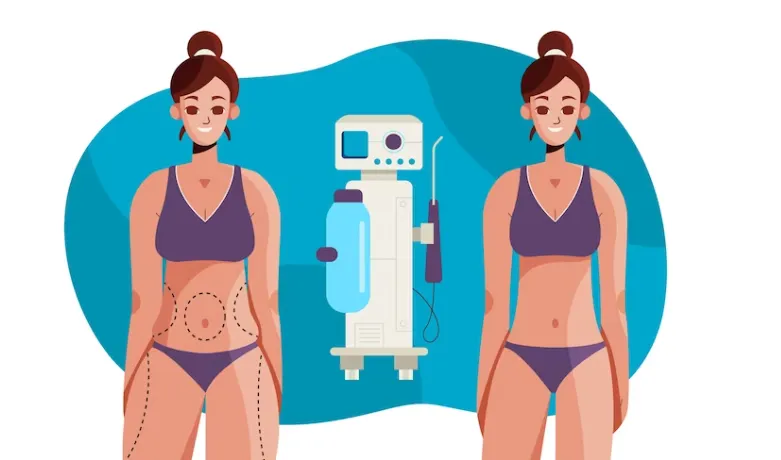In the realm of post-operative recovery, adhering to guidelines for exercise after abdominoplasty is paramount. Exercise after abdominoplasty plays a crucial role in promoting healing, restoring mobility, and enhancing overall well-being. Understanding these guidelines is essential for navigating the recovery process effectively and optimizing the long-term results of the procedure.
Different Types of Exercise After Abdominoplasty
After undergoing abdominoplasty, it is important to prioritize proper post-operative care and recovery. One key aspect of this recovery process is exercise. Engaging in appropriate exercises after an abdominoplasty can aid in strengthening the core muscles, improving overall fitness levels, and maintaining long-term results.
Following your surgeon’s instructions and recommendations is crucial for exercise after abdominoplasty. The specific exercises you can engage in will largely depend on the extent of your surgery and how far you are into the recovery process. Here are a few types of exercises commonly recommended after abdominoplasty:
- Light Aerobic Exercises: In the initial stages of recovery, gentle aerobic exercises such as walking or stationary cycling can help improve blood circulation, prevent blood clots, and aid overall healing.
- Core Strengthening Exercises: As your recovery progresses, targeted exercises to strengthen the core muscles become essential. This may include exercises such as pelvic tilts, gentle abdominal contractions, and gentle Pilates or yoga routines.
- Cardiovascular Exercises: Gradually, you can incorporate low-impact cardiovascular exercises like swimming, elliptical training, or low-intensity jogging into your routine. These exercises help burn calories, improve cardiovascular health, and lose weight.
- Resistance Training: After receiving clearance from your surgeon, incorporating light resistance training with weights or resistance bands can help build strength and muscle tone. It is essential to start with light weights and gradually increase the intensity to avoid strain or injury.
Why You Should Exercise After Abdominoplasty
Regular exercise after abdominoplasty offers numerous benefits that go beyond physical appearance. Here are some compelling reasons why you should prioritize exercise during your recovery:
Abdominoplasty, commonly known as a tummy tuck, is a transformative cosmetic surgery aimed at enhancing abdominal contouring. This procedure targets excess skin and fat, tightening abdominal muscles to achieve a flatter, more toned appearance. With its focus on aesthetic refinement, abdominoplasty remains a popular choice for those seeking to sculpt their midsection.
- Strengthening Core Muscles: Exercise helps strengthen and tone the abdominal muscles, enhancing overall core stability and posture.
- Improved Circulation: Engaging in gentle aerobic exercises can boost blood circulation, aiding healing and reducing the risk of complications.
- Enhanced Weight Management: Regular exercise helps burn calories, supporting weight loss or weight maintenance efforts and contributing to long-term results.
- Increased Energy Levels: Physical activity releases endorphins, promoting well-being and increased energy levels.
- Reduced Risk of Blood Clots: Exercise promotes healthy blood flow, reducing the risk of blood clot formation and associated complications.
- Better Body Awareness: Exercise encourages mindfulness of your body and its limitations, helping you become more attuned to its needs during recovery.
- Boosted Confidence: Regular exercise can improve body image and self-confidence as you witness positive physical strength and appearance changes.
Clinic contact number: +989371200167
How to Exercise After Abdominoplasty Step by Step
It is essential to approach post-abdominoplasty exercises gradually and systematically. Follow these steps to ensure a safe and effective exercise routine:
Consult with Your Surgeon
Before initiating any exercise regimen, consult your surgeon to obtain personalized guidance and ensure you are ready to start exercising.
Begin with Gentle Exercises
Start with low-impact exercises, such as short walks or gentle stretching, to gradually reintroduce movement and assess your body’s response.
Follow a Structured Routine
Create a well-rounded routine that includes cardiovascular exercises, core strengthening exercises, and light resistance training. Aim for a balanced combination of activities throughout the week.
Warm-Up and Cool-Down
Before each exercise session, warm up to prepare your muscles and joints. Afterward, cool down with gentle stretches to help prevent muscle soreness and promote flexibility.
Warm-Up
- Start with Gentle Movements: Begin your warm-up with gentle movements such as walking or slow jogging on the spot for 5-10 minutes. This helps increase blood flow to the muscles and prepares your body for exercise.
- Dynamic Stretches: Perform dynamic stretches that target the muscles you’ll be using during your workout. Focus on stretches for the legs, hips, and core muscles. Avoid deep stretching or twisting movements that may strain the abdominal area.
- Gradually Increase Intensity: Slowly increase the intensity of your warm-up by incorporating light cardio exercises such as cycling or elliptical training. Aim to gradually raise your heart rate and body temperature without overexerting yourself.
Cool-Down
- Endurance Training: Complete your main workout session, focusing on low-impact exercises that engage multiple muscle groups. This could include activities like swimming, brisk walking, or cycling, which help maintain cardiovascular health without putting excessive strain on the abdominal area.
- Static Stretching: After completing your workout, engage in static stretching exercises to improve flexibility and reduce muscle tension. Focus on stretching the major muscle groups worked during your exercise session, holding each stretch for 15-30 seconds without bouncing.
- Deep Breathing and Relaxation: Finish your cool-down with deep breathing exercises and relaxation techniques. This helps promote relaxation and aids in reducing stress levels, which can be beneficial for overall healing and recovery post-abdominoplasty.
Remember to listen to your body and avoid any exercises or movements that cause discomfort or pain in the abdominal area. Always consult with your surgeon or a qualified healthcare professional before starting any exercise program after abdominoplasty to ensure it is safe and appropriate for your individual needs.
Listen to Your Body
Closely to any discomfort or pain during exercise. Modify or stop the activity if something feels wrong and consult your surgeon.
Gradually Increase Intensity
Over time, gradually increase the intensity, duration, and complexity of your workouts. Strive for steady progress while always respecting your body’s limits.
Stay Hydrated
Drink plenty of water before, during, and after exercise to maintain hydration and support optimal recovery.
Maintain a Healthy Lifestyle
Alongside exercise, focus on maintaining a nutritious diet, getting enough sleep, and managing stress to support your overall well-being.
Clinic contact number: +989371200167

15 Benefits of Exercise After Abdominoplasty
Engaging in regular exercise after abdominoplasty offers a range of benefits, including:
- Strengthening and toning abdominal muscles.
- Improved core stability and posture.
- Enhanced cardiovascular fitness.
- Weight management support.
- Increased energy levels.
- Boosted mood and reduced stress.
- Improved blood circulation.
- Reduced risk of blood clots.
- Enhanced body awareness.
- Improved flexibility and range of motion.
- Increased muscle tone and definition.
- Reduced risk of chronic diseases.
- Better sleep quality.
- Improved confidence and self-esteem.
- Long-term maintenance of results.
At around 7-10 weeks after your tummy tuck procedure, you should be cleared to ease into your normal exercise routine. You can begin doing crunches, sit ups, and planks, as long as you progressively increase your repetitions.Belcara Health
10 Risks of Exercise After Abdominoplasty
While exercise can be beneficial, it’s essential to be aware of potential risks and take precautions to prevent complications. Here are some risks associated with exercise after abdominoplasty:

- Increased swelling or bruising.
- Delayed healing or wound complications.
- Excessive strain on surgical incisions.
- Development of seromas (fluid-filled pockets).
- Rupture of internal sutures.
- Increased pain or discomfort.
- Muscle strain or injury.
- Disruption of scar healing.
- Infection (if proper hygiene is not maintained).
- Adverse reaction to exercise medication or supplements.
Optimizing Post-Abdominoplasty Rehabilitation
In the realm of post-abdominoplasty exercise guidelines, prominent institutions like the Mayo Clinic and Johns Hopkins University have conducted extensive research into optimal rehabilitation protocols. Renowned experts such as Dr. Sherrell Aston and Dr. Rod Rohrich have also contributed significantly to the development of evidence-based recommendations for safe and effective exercise after abdominoplasty. Their work emphasizes the importance of gradual progression, adherence to individualized recovery timelines, and the incorporation of low-impact activities to promote healing and prevent complications.
One of the most active hospitals in this field is the Cleveland Clinic, which has established comprehensive post-operative care programs for patients undergoing abdominoplasty. With a multidisciplinary team of plastic surgeons, physical therapists, and exercise physiologists, the Cleveland Clinic offers personalized exercise prescriptions tailored to each patient’s specific needs and recovery goals. Recent statistics from organizations such as the American Society of Plastic Surgeons reveal an increasing trend in the adoption of structured exercise programs post-abdominoplasty, with a notable emphasis on early mobilization and progressive rehabilitation strategies.
These initiatives aim to optimize patient outcomes, reduce the risk of complications, and promote long-term physical function and well-being.

Conclusion
In conclusion, incorporating exercise into the recovery process after abdominoplasty is essential for promoting healing, restoring strength, and enhancing overall well-being. Adhering to established guidelines for exercise after abdominoplasty ensures that patients can safely progress through their recovery journey while minimizing the risk of complications. By prioritizing safety, following recommended protocols, and gradually progressing in their exercise routines, individuals undergoing abdominoplasty can optimize their post-operative outcomes and achieve long-term success in maintaining a healthy and active lifestyle.
Understanding the importance of exercise in the post-operative period empowers patients to take an active role in their recovery and promotes a smoother transition back to normal activities. Through careful adherence to exercise guidelines, patients can regain confidence in their physical abilities, improve muscle tone, and enhance the aesthetic results of abdominoplasty. Ultimately, exercise after abdominoplasty not only aids in physical rehabilitation but also contributes to a sense of empowerment and well-being, supporting patients in their journey toward optimal health and vitality.
Clinic contact number: +989371200167
FAQs
When can I start exercising after abdominoplasty?
The timing may vary depending on your surgeon’s recommendations and your healing process. Typically, light exercises can be initiated within a few weeks after surgery, while more strenuous activities should be avoided for several months.
Can exercise alone tighten loose skin after abdominoplasty?
Exercise can be beneficial for overall health and fitness, but it may not be sufficient to tighten loose skin after an abdominoplasty (tummy tuck) procedure.
How long should I wait before returning to my regular exercise routine?
The timeline for returning to your regular exercise routine varies depending on the extent of your surgery, your overall health, and how well you’re healing. Your surgeon will provide personalized guidance on when it’s safe to gradually increase the intensity and duration of your workouts.
Will exercising affect my abdominoplasty results?
Regular exercise can help maintain the results of abdominoplasty by promoting overall health, muscle tone, and body composition. However, it’s essential to follow your surgeon’s recommendations and avoid overexertion or exercises that may compromise your surgical outcome.
What signs indicate that I’m overdoing it with exercise after abdominoplasty?
Signs of overexertion or pushing yourself too hard during exercise after abdominoplasty include increased pain, swelling, bruising, or fatigue. If you experience any of these symptoms, it’s important to rest and modify your exercise routine accordingly.
For more information:
Thigh lift: Sculpting beautiful and toned Legs
6 Steps to Working Out After a Tummy Tuck | Belcara Health



